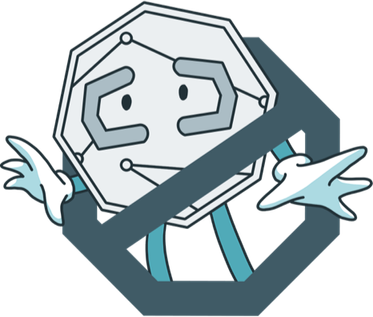Bitcoin (BTC) has leapt from chat rooms and code repos into graduate syllabi. At the University of the Cumberlands (UC), students recently completed the eight-week course “Bitcoin: Fundamentals, Technology, and Applications.”
This graduate course grappled with Rothbard’s monetary theory, Mises’ critiques and technology overviews from classic Bitcoin works. It asked not whether Bitcoin matters but how much it matters — and how it reshapes money, markets and management.
The idea for the course was imagined at the end of 2024, as Bitcoin was approaching new all-time highs (ATH). UC, which has degrees featuring blockchain technology, saw an opportunity to expand its electives beyond these specialized programs. Working with the course development team, the administration approved the offering with a clear mission: to promote financial literacy and ground students in Bitcoin’s fundamentals.
Here’s how the course was taught — from reading list to grading structure — and essential lessons learned for future iterations.
How to teach Bitcoin 101
The course design forced students to confront Bitcoin not as a speculative asset but as a technological and economic phenomenon with historical roots and future applications.
To understand Bitcoin, the course first concentrated on the cypherpunks and their influences over the decades leading up to the Bitcoin Genesis Block and beyond. The works of Chaum, May, Finney, Hughes, Szabo and others helped to demonstrate that governmental overreach, privacy infringements and individual liberty were influential concepts in the pre-Bitcoin era and on Bitcoin forums.
Many of these people created the first iterations and attempts at a modern digital currency:
David Chaum’s DigiCash in 1989
Douglas Jackson’s E-Gold in 1996
Adam Back’s Hashcash idea in 1997
Nick Szabo’s Bit Gold
Wei Dai’s B-money in 1998
All brought pieces of the Bitcoin puzzle, like proof-of-work, pseudonymity and consensus algorithms.
From Rothbard to Bitcoin
One of the influences of the cypherpunks and early Bitcoiners was Murray Rothbard, an economics professor and prolific writer. He wrote a perfect book that walks through the issues with the fiat system, called “What Has Government Done to Our Money?”
Working through the basics of central banking, debasement and the eras of government-controlled money, students could see how cypherpunks were motivated to create a currency that could organically be accepted by society that did not have the pitfalls of fiat-backed currency.
Related: Bitcoin set to beat ‘red September’ dip for third straight year
Rothbard produced this work in the 1970s, long before the Bitcoin white paper. But he grapples with fundamental questions, like what properties of money matter and why only society can decide what counts as money. This makes the book an excellent springboard into the discussion about Bitcoin as an alternative to the problems of fiat.
The code for the curriculum
Due to the diverse background of the students, being too technical was an issue when introducing Bitcoin, as the course is only eight weeks long. Being too deep in the weeds could alienate an MBA student, while not explaining enough of the computer science behind Bitcoin could lead to students not understanding how it is an actual solution.
For this, Yan Pritzker’s book “Inventing Bitcoin” offered the perfect solution. It explains how the history of the pre-Bitcoin cryptocurrency attempts failed, what each brought to the computer science table and, eventually, how each influenced Bitcoin’s creation.
Pairing this with articles from cryptomedia outlets like Cointelegraph, other works from authors such as Saifedean Ammous (“The Bitcoin Standard”), Andreas Antonopoulos (“Mastering Bitcoin”) and Jeff Booth (“The Price of Tomorrow”), students were allowed to explore the economics and technology of the Bitcoin revolution in a non-overwhelming manner.
How to assess and grade a Bitcoin class
Each week, students produced graduate-level research papers tackling questions that forced them to bridge theory and practice. One assignment asked: What were three of the pre-Bitcoin attempts at digital currency, and how did their failures help Bitcoin’s design?
Another challenged them to evaluate whether Bitcoin satisfies Mises’ Regression Theorem to qualify as “true money.” Weekly discussions complemented the writing, drawing out both technical detail and the myths that have long haunted the cryptoverse.
The usual objections surfaced: Bitcoin is only for criminals; its carbon footprint will boil the oceans; it’s too volatile to be a store of value. By defending or dismantling these claims with data and theory, students had their comprehension tested while revealing where their intuitions clashed with Bitcoin’s realities.
Related: Back to school: Teachers adopt new methods to tackle AI
One particularly striking outcome came from a capstone paper on Bitcoin’s energy usage. A student began from the familiar critique of Bitcoin as an environmental villain, only to conclude, after comparing mining’s footprint to the global financial system, that Bitcoin consumed far less energy and emitted far fewer emissions than expected. That reversal, grounded in the student’s own research, underscored how structured academic inquiry can cut through both hype and fear.
Bitcoin course improvement proposals: What’s next?
Like Bitcoin, the course will learn from its earliest iterations and make improvements. For one, the myths in the common media will be brought up in earlier weeks. A mistake made in this first iteration was assuming that only those already interested in Bitcoin would take this course. If one of the biggest problems with Bitcoin adoption is educating the public, overcoming the fear, uncertainty and doubt still has to be front and center.
Besides the books mentioned above, a lab will be added, which walks through each step of a transaction process in Bitcoin, from initiation to cold storage. During this journey, every technical aspect will be explained: not only the “how” of each part in the process, but also “why” it is there. This lab will be a hands-on way of connecting the dots from the pre-Bitcoin cypherpunk philosophy days through today’s expanse into traditional finance, decentralized finance and beyond.
Bitcoin and formal graduate education
Adding a course on Bitcoin to the curriculum at the University of the Cumberlands was a natural fit. With the only international accreditation for its Master of Science in Global Business with Blockchain Technology program, UC is always looking to help students gain financial literacy through practical subjects.
The Bitcoin course is a graduate-level elective, yet it may become part of another program offered at the university. Even if someone’s interest in cryptocurrency is outside of “just Bitcoin,” having a fundamental understanding of Bitcoin is essential to being a well-rounded blockchain professional.
Magazine: ‘Accidental jailbreaks’ and ChatGPT’s links to murder, suicide: AI Eye


